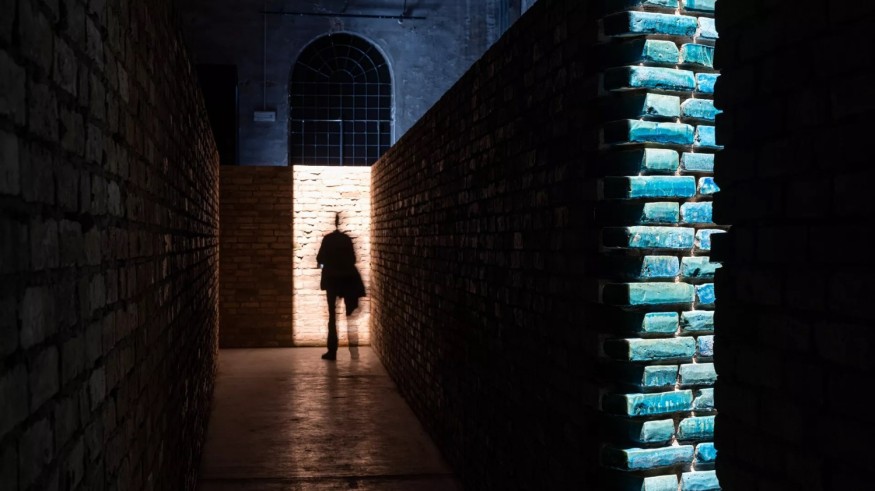Uzbekistan’s Future Architects: Ajou University Students Triumph at the 18th Venice Biennale

In the grand finale of the 18th Venice Architecture Biennale, a group of visionary university students from Ajou University in Tashkent stood in awe as their creations came to life in the Uzbekistan National Pavilion. Collaborating with the renowned French Studio KO, these young architects crafted a masterpiece, ' Unbuild Together: Archaism vs. Modernity,' commissioned by the Uzbekistan Art and Culture Development Foundation.
The pavilion delves into Uzbekistan's lesser-known ancient past, drawing inspiration from the 300 desert fortresses of Ancient Khorezm, known as qalas, that dot the Karakalpakstan Region and date back to the 1st century BC. Despite their ancient origins, 50 of these fortresses still stand today, providing a tangible link to a bygone era.
To breathe life into their design, 25 students embarked on a journey to explore these ancient qalas firsthand. Visiting well-preserved sites like Toprak Qala and Koi Krylgan Qala, as well as the historically rich city of Bukhara, the students immersed themselves in the stunning brickwork and blue-hued tiles that have been mastered over centuries.
The resulting Pavilion in Venice is a celebration of both Khorezm's heritage and the architectural prowess of Bukhara, exploring the versatile use of earth, particularly bricks, as a foundational building material in Uzbek architecture. During the six-month-long biennale, the pavilion attracted more than 260,000 visitors, showcasing the success of this collaborative effort.

Uzbekistan's Architectural Exploration in Venice
The project featured contributions from various artists, including Uzbek master Abdulvakhid Bukhoriy, known for his ceramics and glazing techniques; Moroccan filmmaker El Mehdi Azzam; Italian model maker Miza Mucciarelli; and Turkish photographer Emine Gözde Sevim. This collaboration aimed to create a multi-layered and poetic interpretation of Uzbekistan's rich history and seamless integration with modernity.
Central to the design was a commitment to sustainability and environmentally friendly building methods. After the biennale concluded, the dismantled pavilion's bricks found a new purpose in Venetian heritage restoration works, embodying a commitment to responsible construction practices.
The students' visit to Venice wasn't merely about showcasing their creations; it was an opportunity to delve into the city's renowned architectural heritage. Supported by professors from the Iuav University of Venice and artisans from Murano's storied glasswork manufacturers, the students engaged in a comparative study of how different cultures balance preserving historical brick artisanship with embracing modern architectural innovation.
Gayane Umerova, Chairperson of the Uzbekistan Art and Culture Development Foundation, emphasized the importance of engaging future architects with Uzbek heritage and the creators from the millennia past. The project aimed to use the designs of yesteryear as a foundation for building a better tomorrow.
As the biennale concluded, the Uzbek government expressed delight with the pavilion's success, revealing plans to participate in the next biennale. The 18th Venice Architecture Biennale, themed "The Laboratory of the Future," challenged participating nations to envision how civilizations can adapt for a better, greener, and more sustainable future. Curated by Lesley Lokko and Demas Nwokowon, who received the Golden Lion for Lifetime Achievement, the biennale served as a platform for innovative ideas and forward-thinking architectural marvels.
Travis Scott Slams Victory Boyd in Explosive 'Telekinesis' Lawsuit: 'She Lied on Copyright'

From Digital Models to 3D-Printed Homes: Jaspreet Kaur Lall Explains How the Innovation Changes the Construction Industry

Future Belongs to Green Construction: Sampath Kumar Paspunoori Explains One of the Key Trends in the Construction Industry

Kamala Harris' Campaign Ad Uses Iconic Visuals from Carrie Mae Weems to Connect with Voters

Historic Ancient Roman Ruins in Baalbek Remain Strong After Israeli Air Strikes; Locals Seek Cultural Protection












